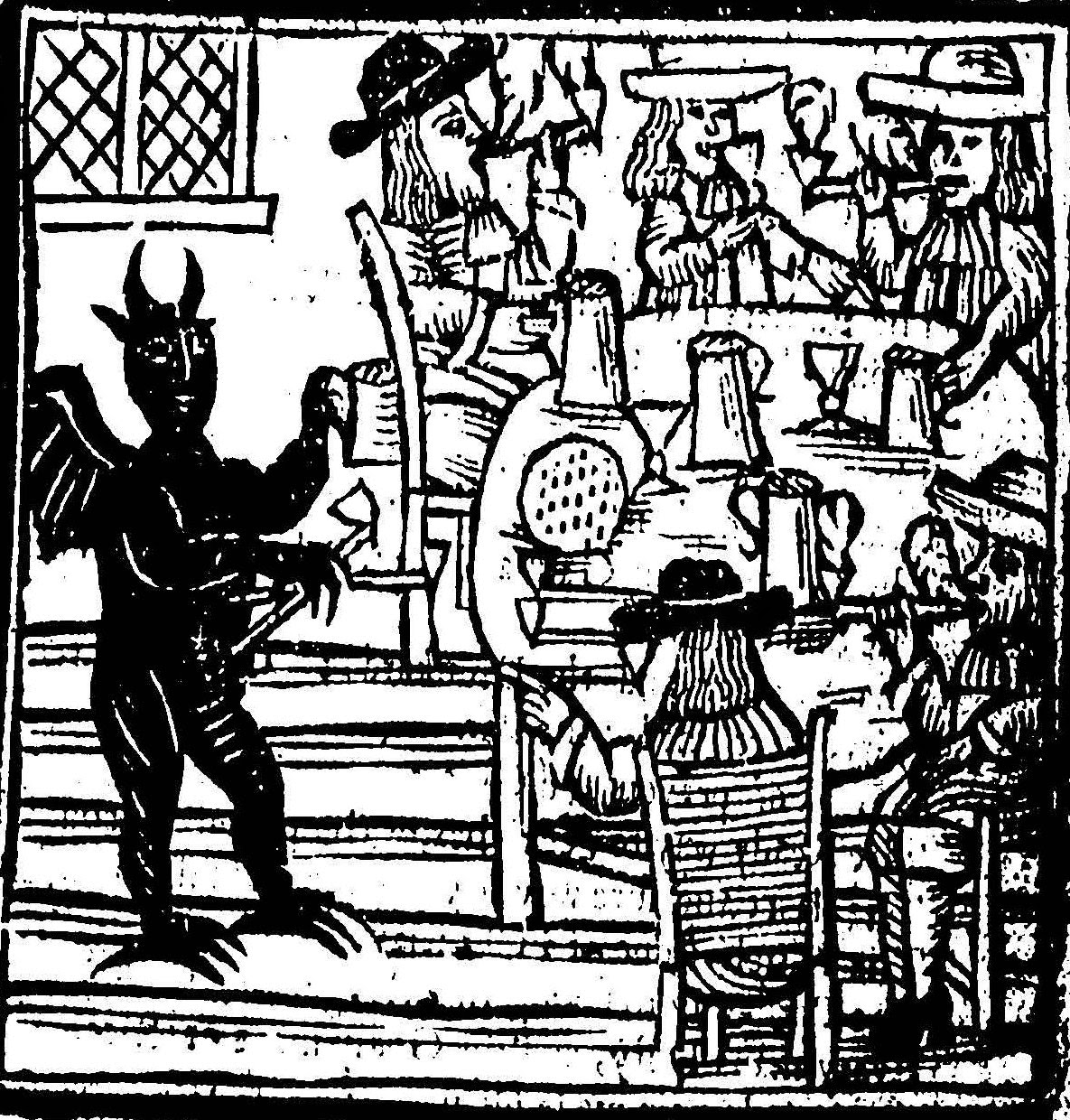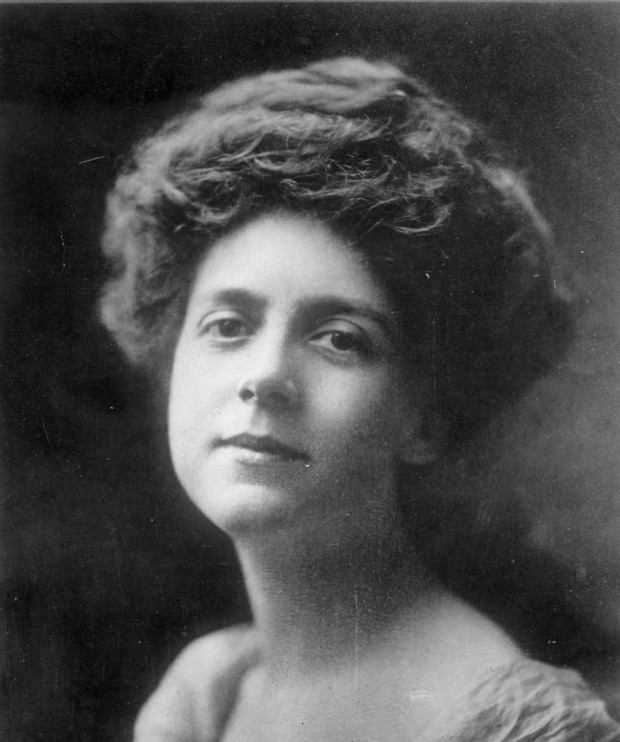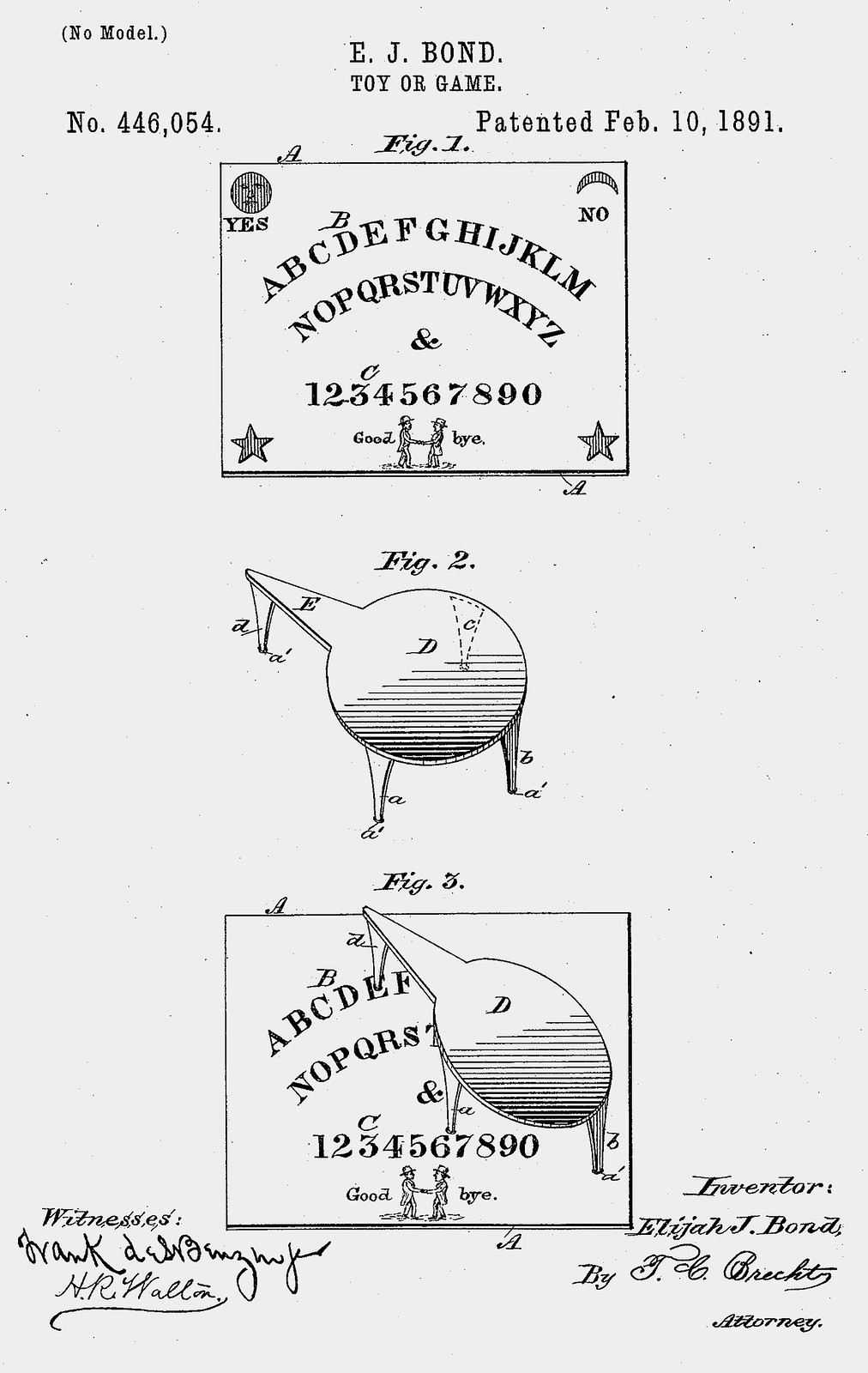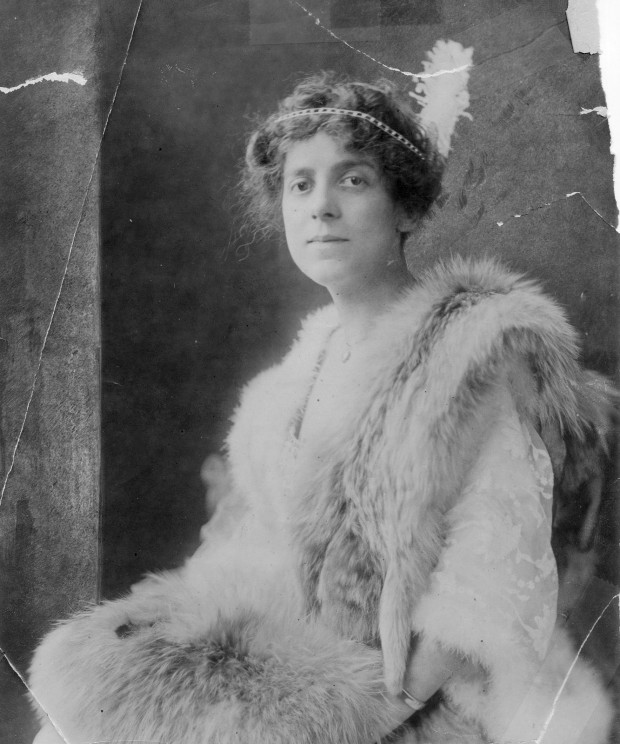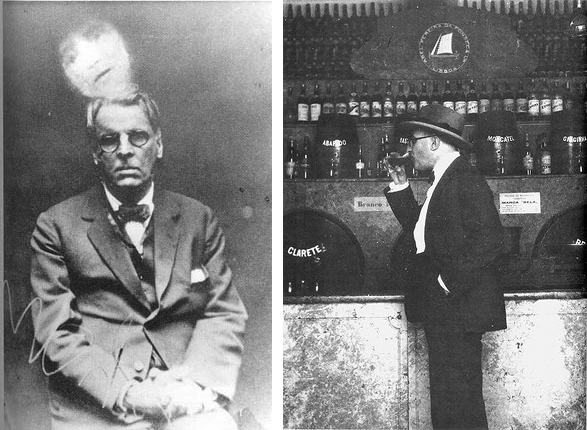Wales: It’s the land of dragons, wizards, King Arthur and the Holy Grail but did you know that the Devil is too embarrassed to visit Ceredigion?
That there’s a village named after the country’s bravest dog? Or that the Holy Grail itself ended up in a mansion near Aberystwyth?
Go on your very own quest to find out more about our myths and legends this Halloween.

Devil’s Bridge
According to legend the Devil himself visited Ceredigion in the 11th century after hearing about its
breathtaking scenery. While there, he struck a bargain with a local woman whose cow was stranded across the river. In a bid to buy her soul, the devil said he’d build her a bridge in exchange for the soul of the first living thing that crossed it.
When the bridge was built the woman threw a loaf of bread across it which her dog then chased.
The Devil was never seen in Wales again, too embarrassed at being outwitted by the old lady.
In the village of Devil’s Bridge today there are three crossings across the river. The oldest is said to have been built by Satan himself.
The Lady of the Lake
The story goes that it was at Llyn y Fan Fach, a remote lake in the Black Mountains, where a young farmer named Gwyn won and then tragically lost the love of his life.
He fell in love with a beautiful woman who emerged from the water and she agreed to marry him but warned him she would leave him forever if he struck her three times.
They lived happily for many years and had three sons but when Gwyn struck her playfully for the third time she disappeared into the lake and he never saw her again.
She would sometimes re-appear to her sons and teach them the powers of healing with herbs and plants. They became skilful physicians, as did their children after them.
Some of their ancient remedies have survived and are in the Red Book of Hergest, one of Wales’ most important medieval manuscripts.
Nanteos Cup
The cup is said to be the Holy Grail, used by Joseph of Arimathea to catch Christ’s blood while interring Him in his tomb.
Medieval chroniclers claimed Joseph took the cup to Britain and founded a line of guardians to keep it safe. It ended up in Nanteos Mansion near Aberystwyth, attracting visitors who drank from it, believing it had healing powers.
The cup still exists with bits nibbled off by the sick in the hope of a miracle cure.
Belief in the cup’s holy powers have persisted despite a 2004 television documentary in which experts found it dated from the 14th Century, some 1,400 years after the Cruxifiction. In July 2014, a police operation was launched to find it after it was stolen.
Cadair Idris
One of Wales’ most iconic peaks, standing in southern Snowdonia, its name directly translates as Idris’ Chair in reference to the mythical giant who once used the mountain as his throne.
There are numerous stories and legends associated with the mountain and Idris.
A few of the nearby lakes - such as Tal-y-llyn - are reputed to be bottomless, and those who venture up the mountain at night should take heed before sleeping on its slopes.
It is said that those who sleep on the mountain will awaken either as a madman, a poet or, indeed, never wake again.
Angelystor

Folklore says villagers in Llangernyw, midway between Abergele and Llanrwst, learn their grim fate from a supernatural being under the boughs of a 3,000-year-old yew tree.
Each year on Halloween and July 31 the Angelystor is said to appear in the medieval church of Llangernyw in Conwy.
On those dates it solemnly announces, in Welsh, the names of those parish members who will die shortly after.
The churchyard contains the oldest living thing in Wales - a yew tree which botanists believe to be over 3,000 years old.
Cantre’r Gwaelod
The kingdom of Maes Gwyddno, more commonly known as Cantre’r Gwaelod, is said to lie under the Irish Sea in Cardigan Bay.
It was ruled by Gwyddno Garanhir (Longshanks), born circa 520AD.
The land was said to be extremely fertile but depended on a dyke to protect it from the sea. The dyke had sluice gates which were opened at low tide to drain the water from the land, and closed as the tide returned.
In around 600AD, a storm blew up from the south west, driving the spring tide against the sea walls. The appointed watchman, Seithennin, a heavy drinker and friend of the king, was at a party in the king’s palace near Aberystwyth.
Some say he fell asleep due to too much wine, or that he was too busy having fun, to notice the storm and to shut the gates.
The water gates were left open, and the sea rushed in to flood the land of the Cantref, drowning more than 16 villages.
Merlin’s Oak

Merlin’s Oak stood in the centre of Carmarthen amid the legend that King Arthur’s famous wizard had placed a protective curse on it.
In local tradition, the wizard said Carmarthen would “drown” if the oak was ever removed, and some even said a curious, pointed notch in the tree was the face of Merlin himself.
In fact, the tree was poisoned in the 1850s by a local who objected to people holding meetings beneath it, but its trunk was preserved within iron railings.
It was then removed from the town when someone set it on fire at the end of the 1970s.
Carmarthen then suffered its worst floods for many years.
Bardsey Island off the coast of the Llyn peninsula, meanwhile, is said to be the burial place of Merlin who lies in a glass coffin surrounded by the 13 treasures of Britain and nine bardic companions.
Gelert
The village of Beddgelert in Gwynedd literally means Gelert’s Grave and is supposedly the final resting place of Wales’ most famous dog.
The canine belonged to Llywelyn the Great, Prince of Gwynedd, who one day was out hunting with his wife, leaving their baby son with a nurse and a servant to look after him.
The nurse and the servant went for a walk in the mountains leaving the baby alone. When Llewelyn returned Gelert came running out of the lodge towards his master, covered in blood.
Llewelyn rushed into the baby’s room to find the cradle overturned and no sign of his son.
Filled with grief he drew his sword and killed Gelert. As the dog died his whimpers were answered by the sound of a baby crying from behind the overturned cradle.
When Llewelyn pulled aside the cradle he found his son unharmed and the body of a huge wolf next to him.
With huge remorse, Llewelyn buried Gelert in a meadow nearby and marked his grave with a cairn of stones.
Twm Sion Cati
Dubbed the Welsh Robin Hood, Twm Sion Cati was actually a bard and genealogist called Thomas Jones who lived in Tregaron from 1530 to 1620.

He became a highwayman robbing the rich but it appears he was a bit tight-fisted and didn’t distribute a penny to the poor.
He was reputed to be a trickster and a master of deception. But he also had a soft side – he avoided maiming his victims and preferred to pin them with a well-aimed arrow to their saddles.
He hid from the Sheriff of Carmarthen in the wooded slopes of Dinas Hill, close to Rhandirmwyn, and his cave today is well hidden on the banks of the river Towy in the RSPB sanctuary of Dinas Hill.
King Arthur
Arthur is heavily associated with Wales.
The lakes of Llydaw, Dinas and Ogwen, are amongst those that claim to contain the magical Excalibur.
A stone reputedly bearing the hoof print of Arthur’s horse Llamrai can be found on the banks of Lake Barfog near Betws y Coed.
It is said that the mark was made when Arthur and his horse dragged a monster from the lake’s deep waters.
Arthur is also associated with Mount Snowdon, where he reputedly killed the mountain’s most famous resident - Rhitta, a fearsome giant who created a cape for himself out of the beards of his enemies. His corpse was covered in huge stones by Arthur’s men at the summit of the mountain.
Dinas Emrys
Located near Beddgelert is Dinas Emrys, the lofty mountain home of the Welsh red dragon.
In the fifth century the Celtic King Vortigern chose the area as the site for his castle.

Every day his men would work hard erecting the first of several proposed towers; but the next morning they would return to find the masonry collapsed in a heap.
Vortigern was advised to seek the help of a young boy who turned out to be Merlin.
He explained that the hill fort could not stand due to a hidden pool containing two dragons. Vortigern commanded his labourers to dig deep into the mountain and they did indeed discover an underground lake.
Once drained, the red and white dragons that lay sleeping there awoke and began to fight.
The white dragon represented the Saxons and the red dragon the Welsh. Eventually the white dragon fled and the red dragon returned quietly to his lair.
Vortigern’s castle was built and duly named after Dinas Emrys. The red dragon has been celebrated ever since.
The Afanc

A lake monster from Welsh mythology, the afanc can also be traced through references in British and Celtic folklore.
Sometimes described as taking the form of a crocodile, giant beaver or dwarf, it is also said to be a demonic creature.
The afanc was said to attack and devour anyone who entered its waters.
Various versions of the tale are known to have existed. In one telling the wild thrashings of the afanc caused flooding which drowned all the people of Britain.
Several sites lay claim to its domain, among them Llyn Llion, Llyn Barfog and Llyn-yr-Afanc (the Afanc Pool), a lake in Betws-y-Coed.
Madoc

Prince Madoc was the son of Owain Gwynedd, one of the greatest and most important rulers in the
country.
In 1170 Owain died and, almost immediately, a violent and very bloody dispute arose between his 13 children regarding the succession.
Madoc and his brother Rhirid were so upset and angered by events that they decided they wanted nothing more to do with their family or their homeland.
They duly took ship from Rhos on Sea and sailed westwards to see what they could find.
What Prince Madoc found, so the legend runs, was America. He and his brother managed to cross the Atlantic and land on the shores of the New World.
His sailors inter-married with a local Native American tribe, and for years the rumour of Welsh-speaking Native American tribes was widely believed.
St David

Born around the year 520 on the cliffs in a wild thunderstorm near the city that’s now named after
him, David was believed to be the son of Sanctus, king of Ceredigion and a nun called Nonnita (Non).
Stories of St David’s miracles include bringing a dead boy back to life by splashing the child’s face with tears and restoring a blind man’s sight.
David’s best-known miracle allegedly took place in the village of Llanddewi Brefi.
He was preaching to a large crowd, but some people had difficulty hearing him.
Suddenly a white dove landed on David’s shoulder, and as it did, the ground on which he stood rose up to form a hill, making it possible for everyone to see and hear him. Today, a church stands on the top of this hill.
And, of course, the Mabinogion...
The Mabinogion is a collection of tales taken from medieval Welsh manuscripts. Based partly on historical events, many recount myths and legends dating from the 11th century.
The complex stories are set in a bizarre and magical landscape which corresponds geographically to the western coast of Wales and are full of white horses that appear magically, giants, beautiful, intelligent women and heroic men.
Story:
WalesOnLine









